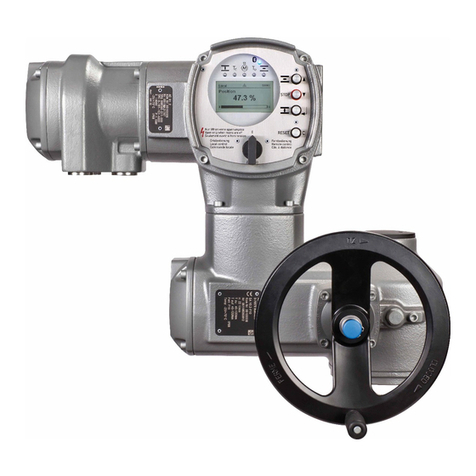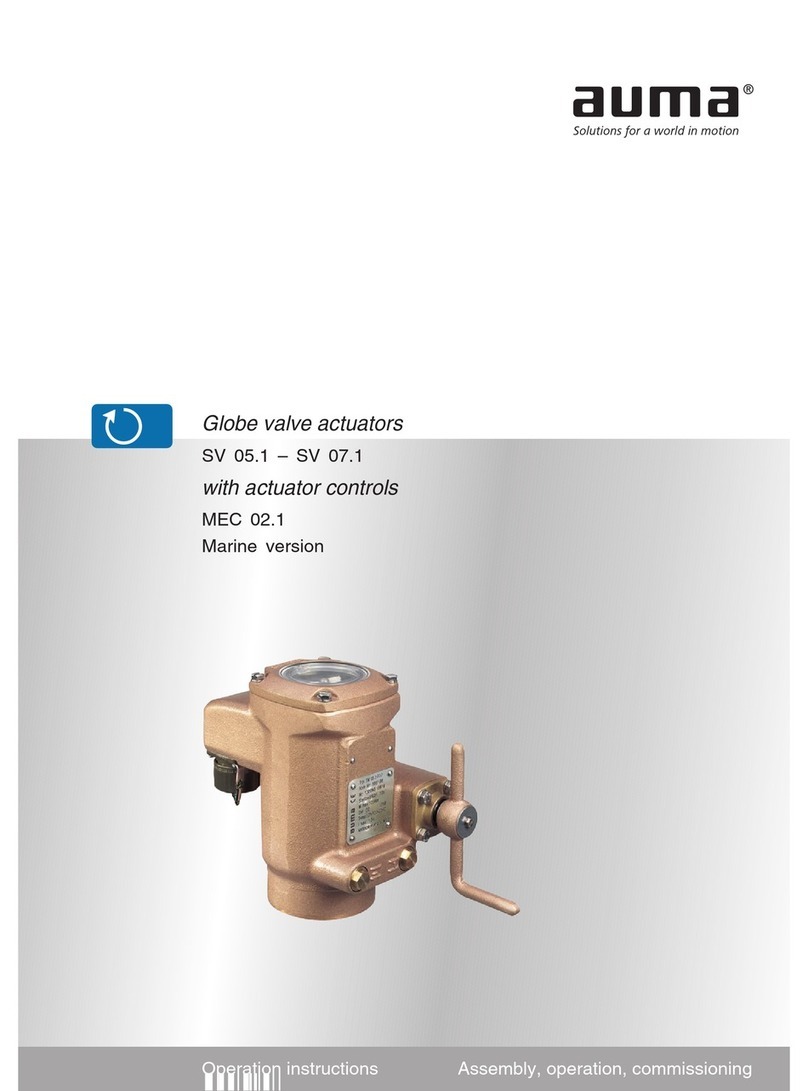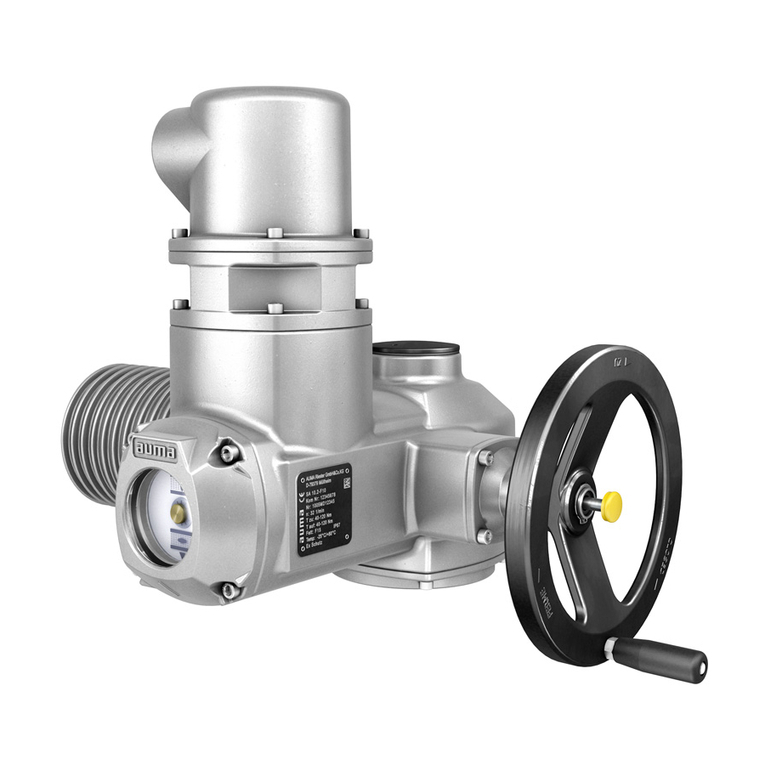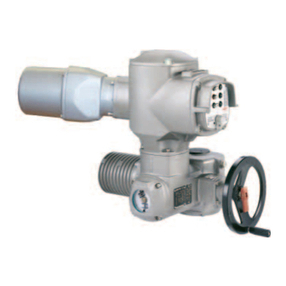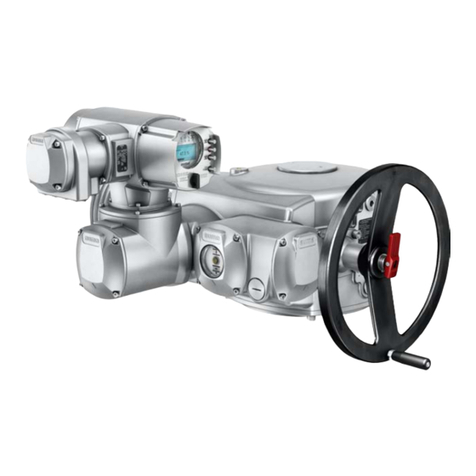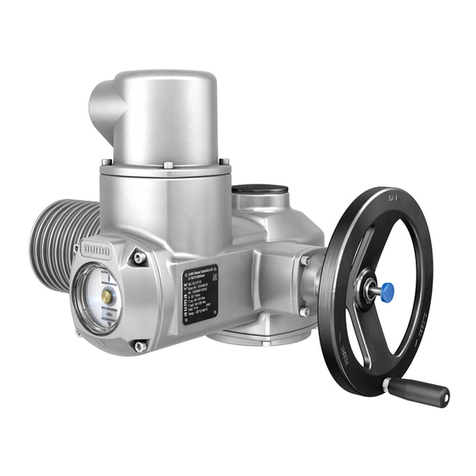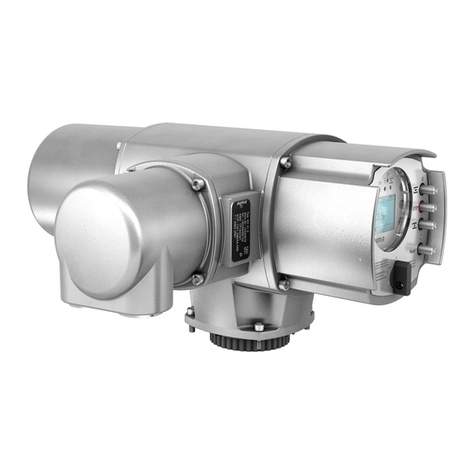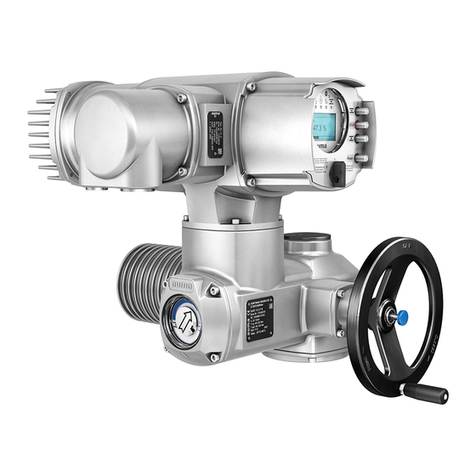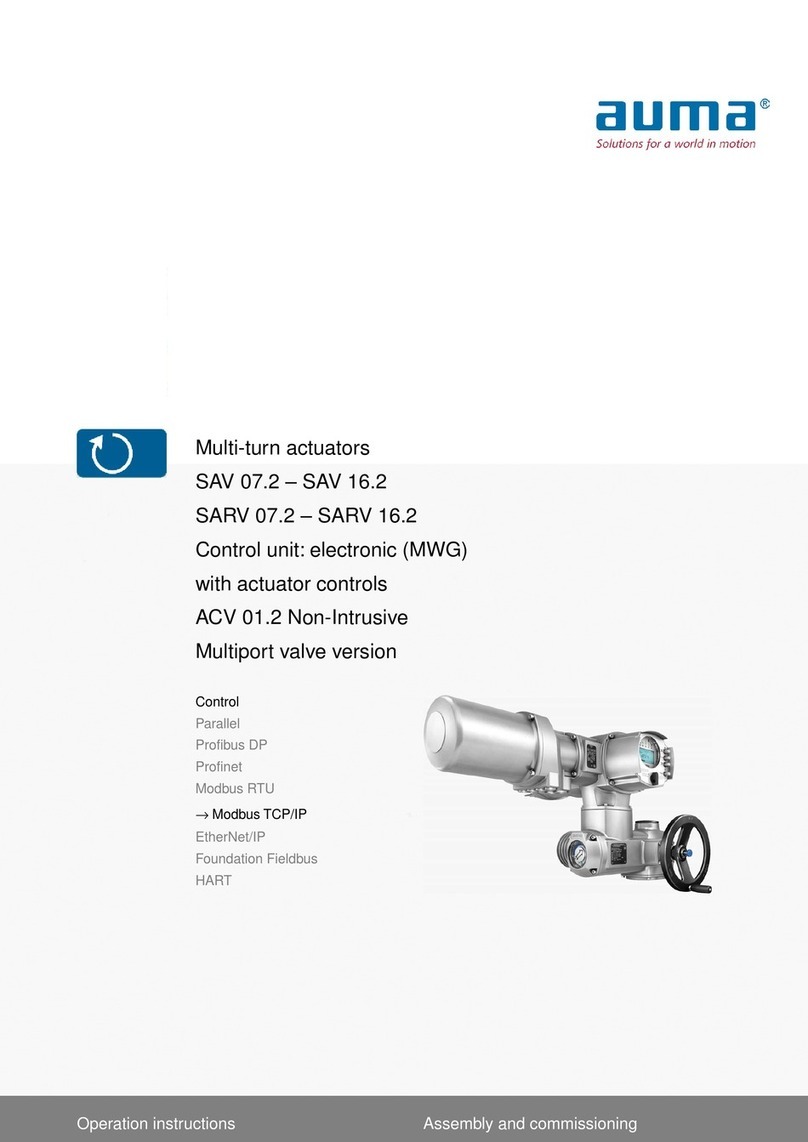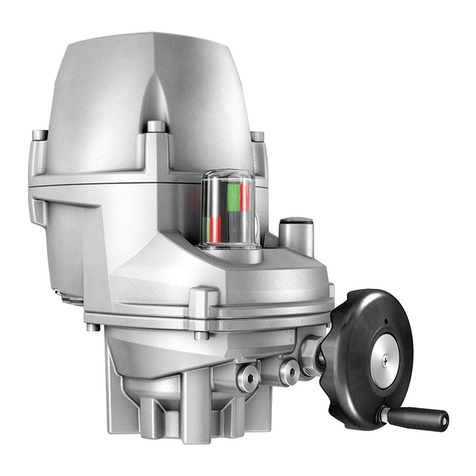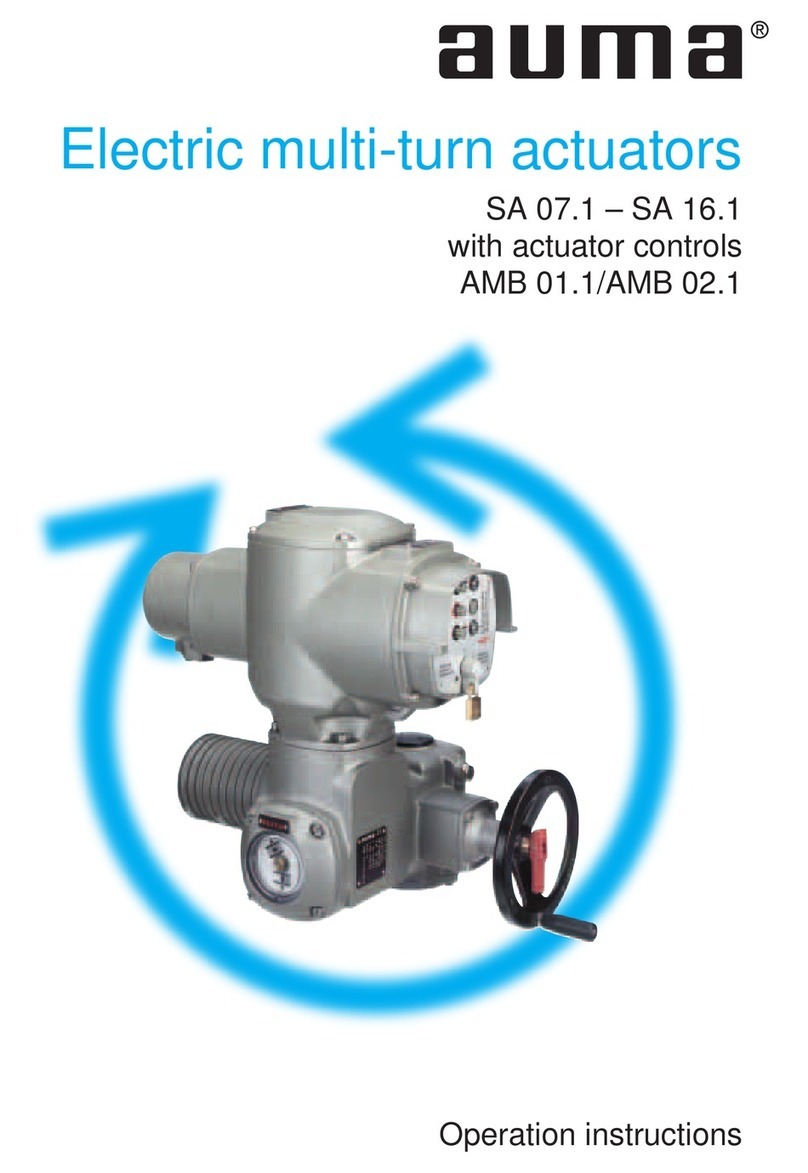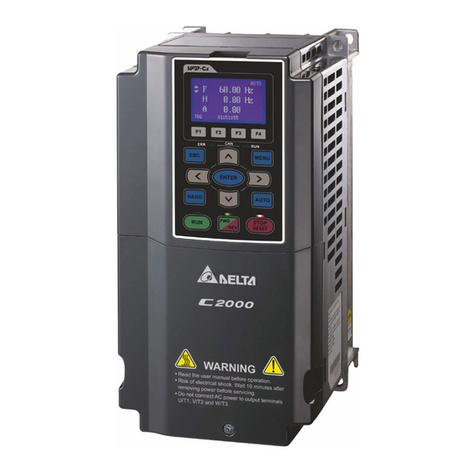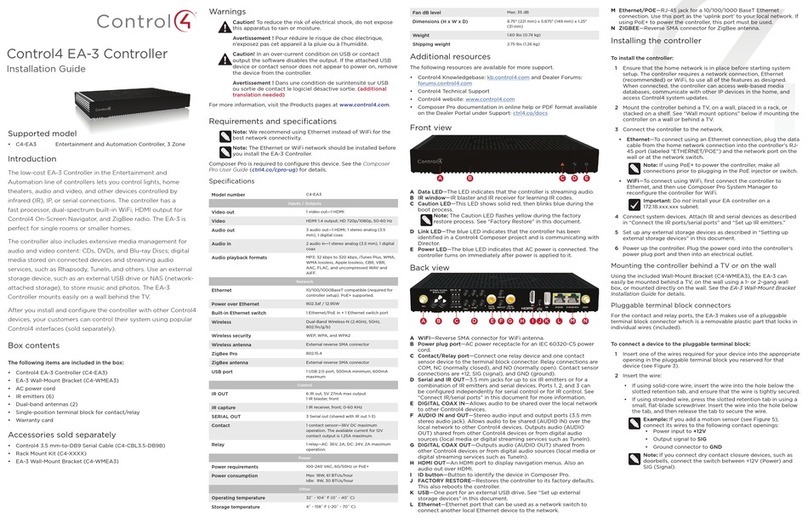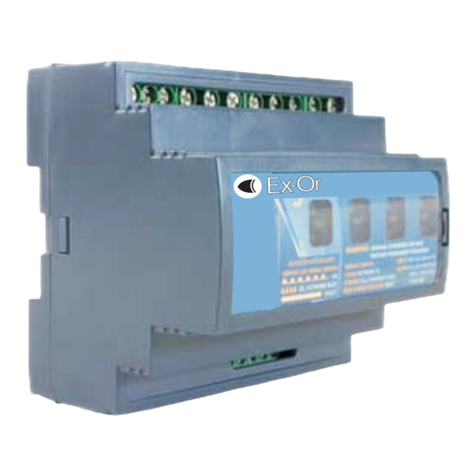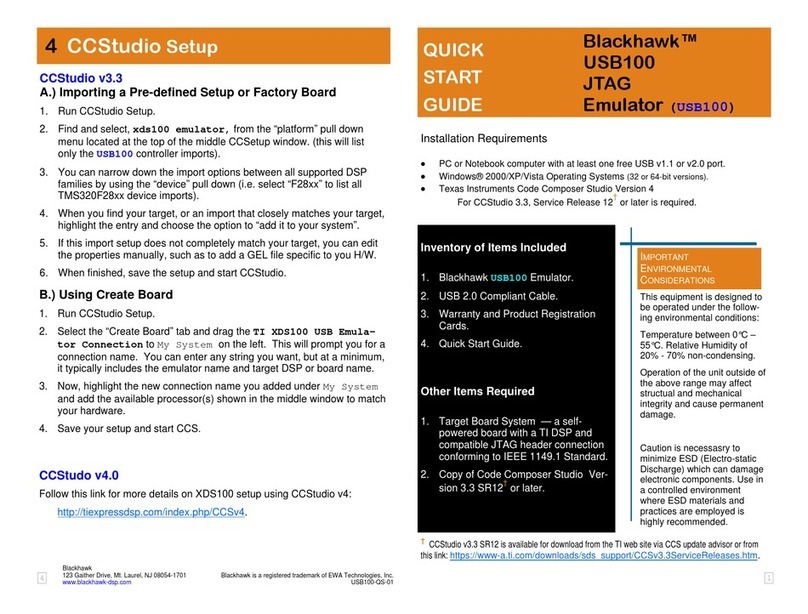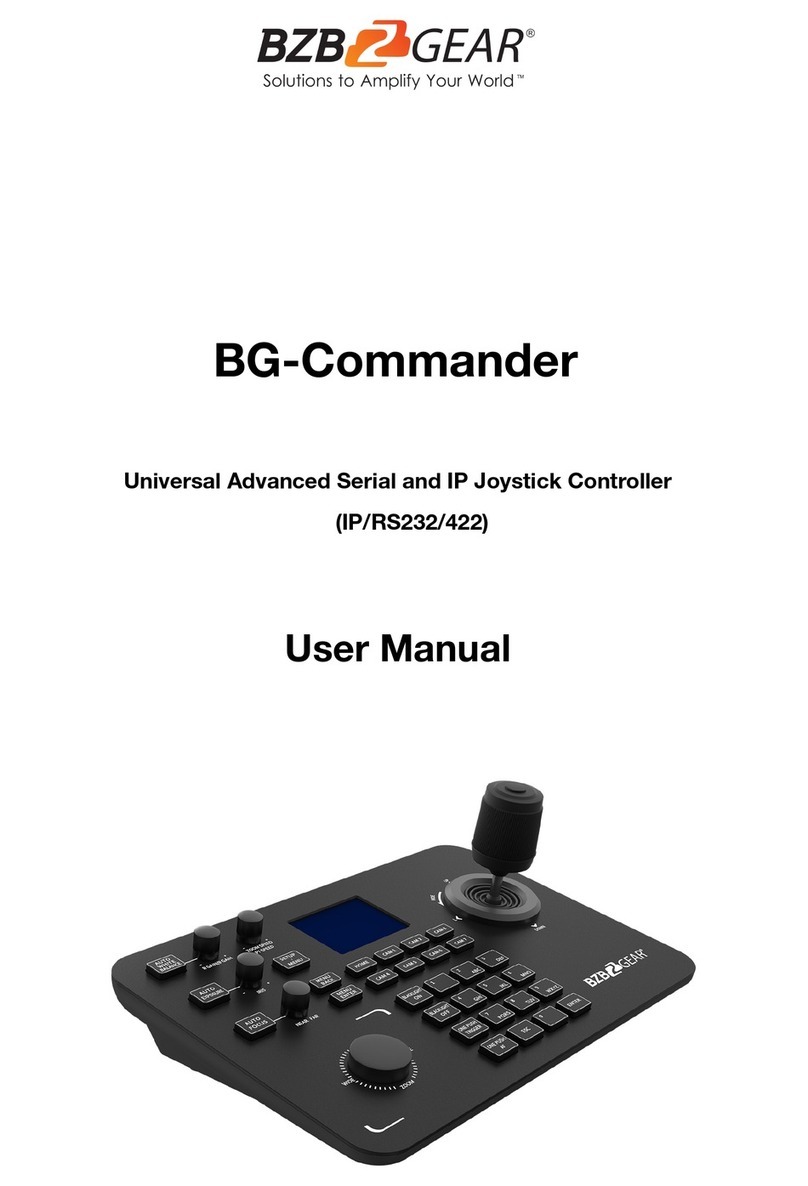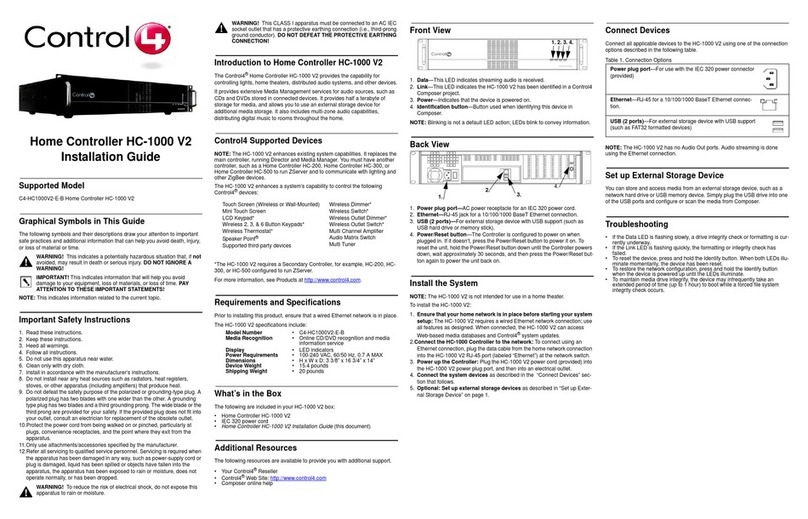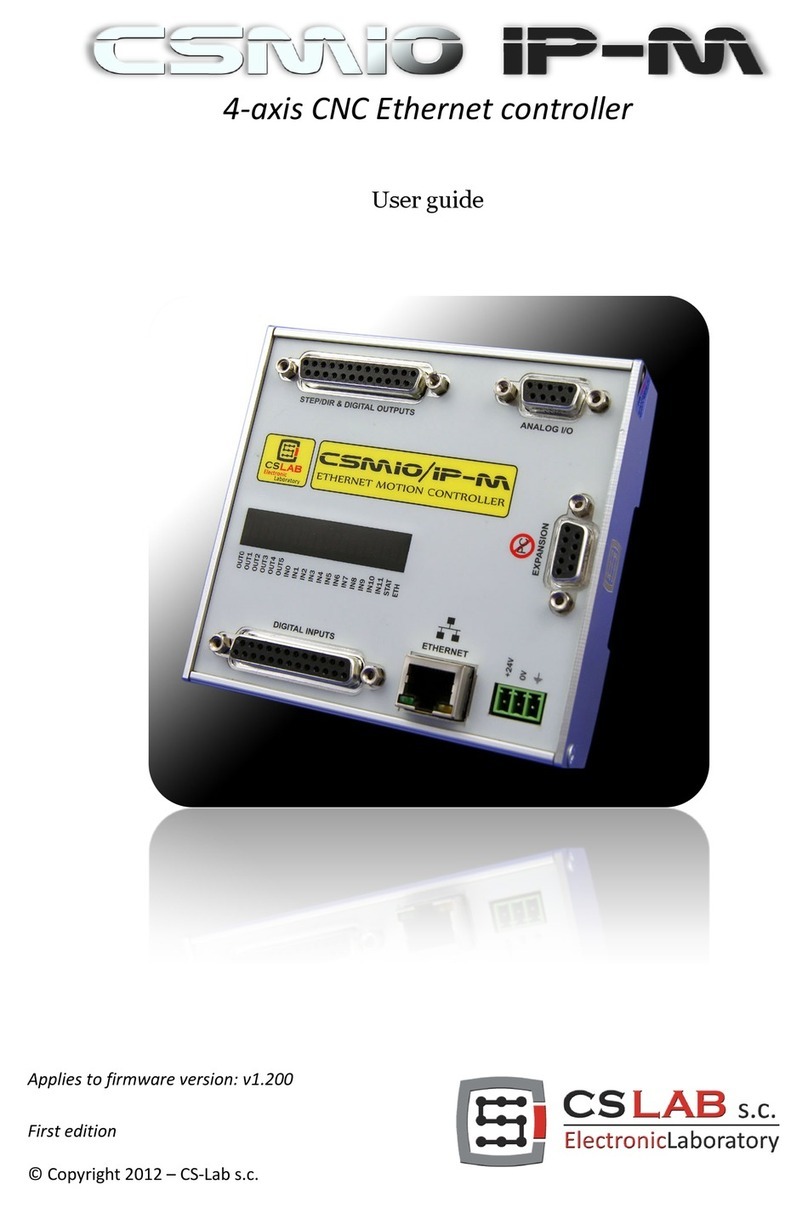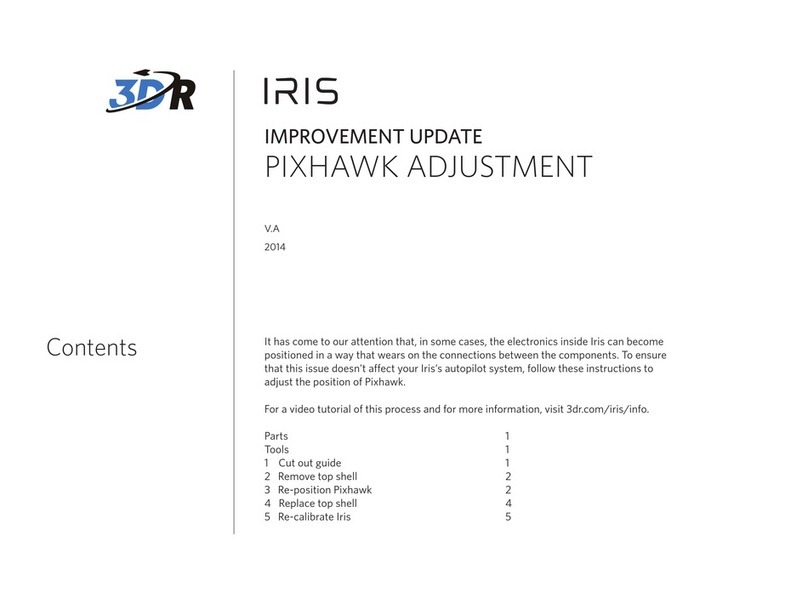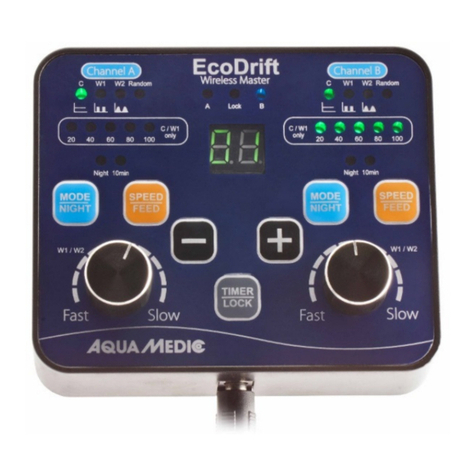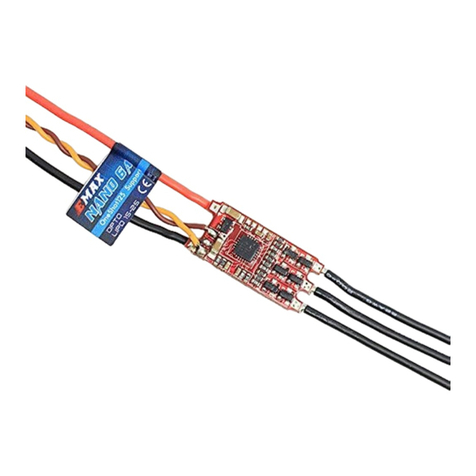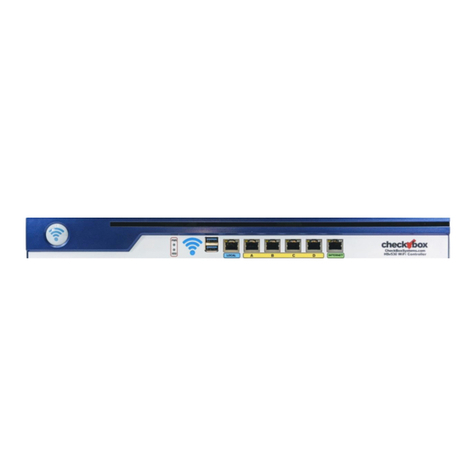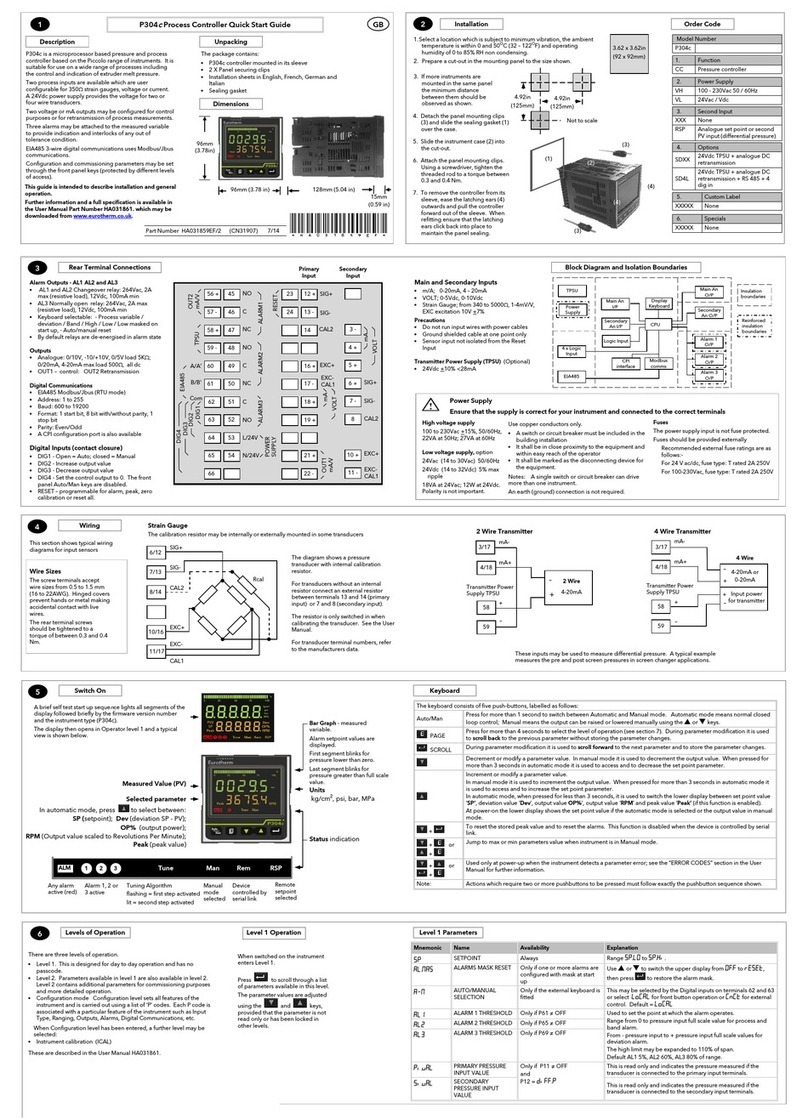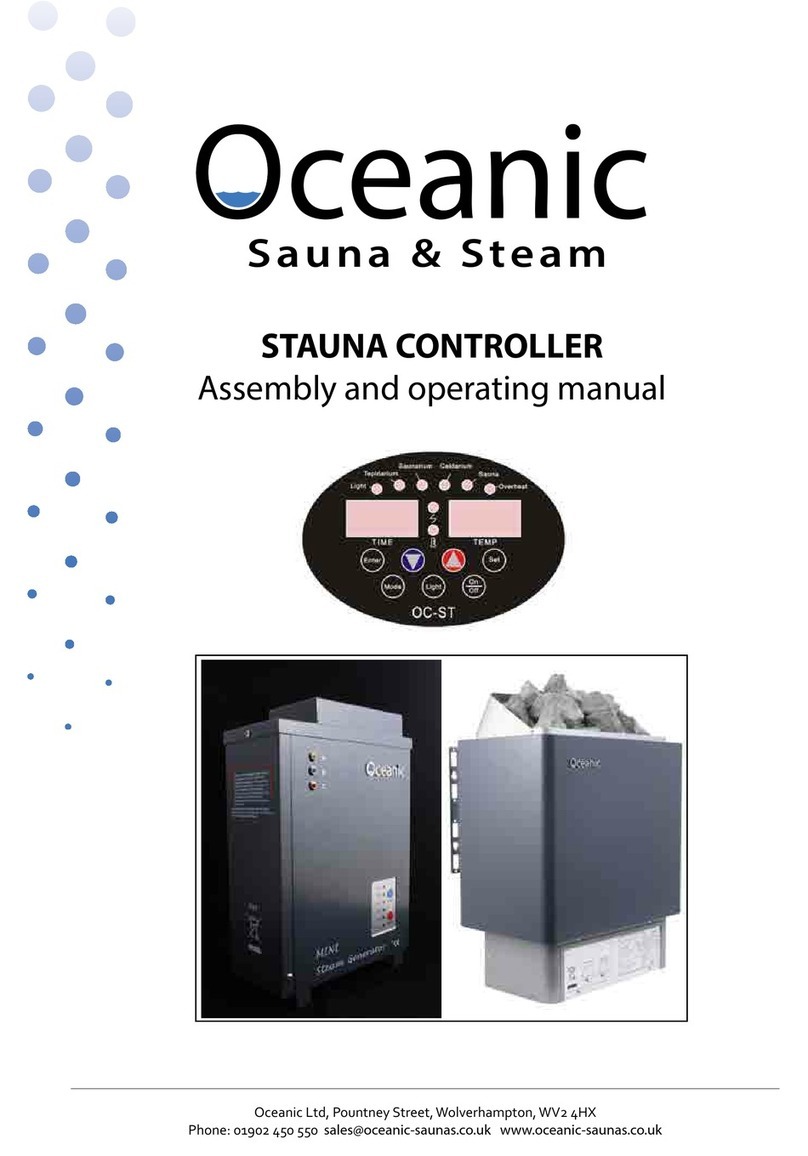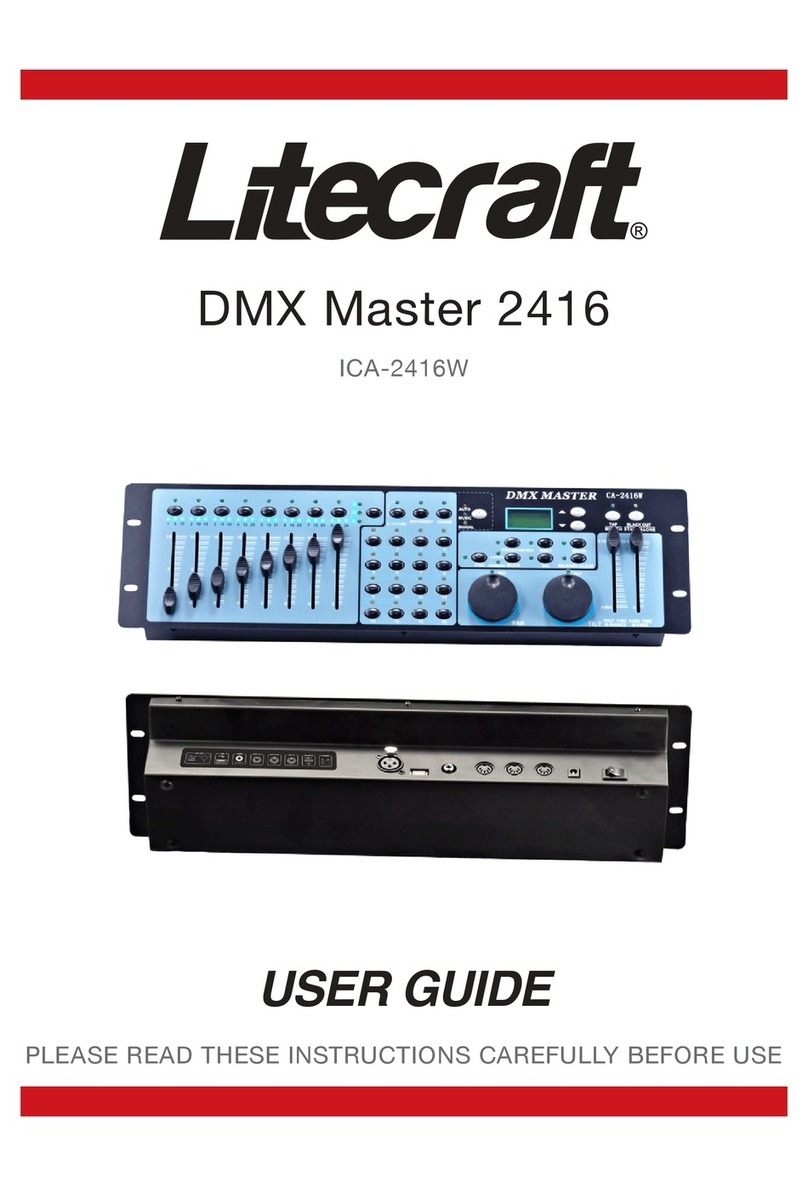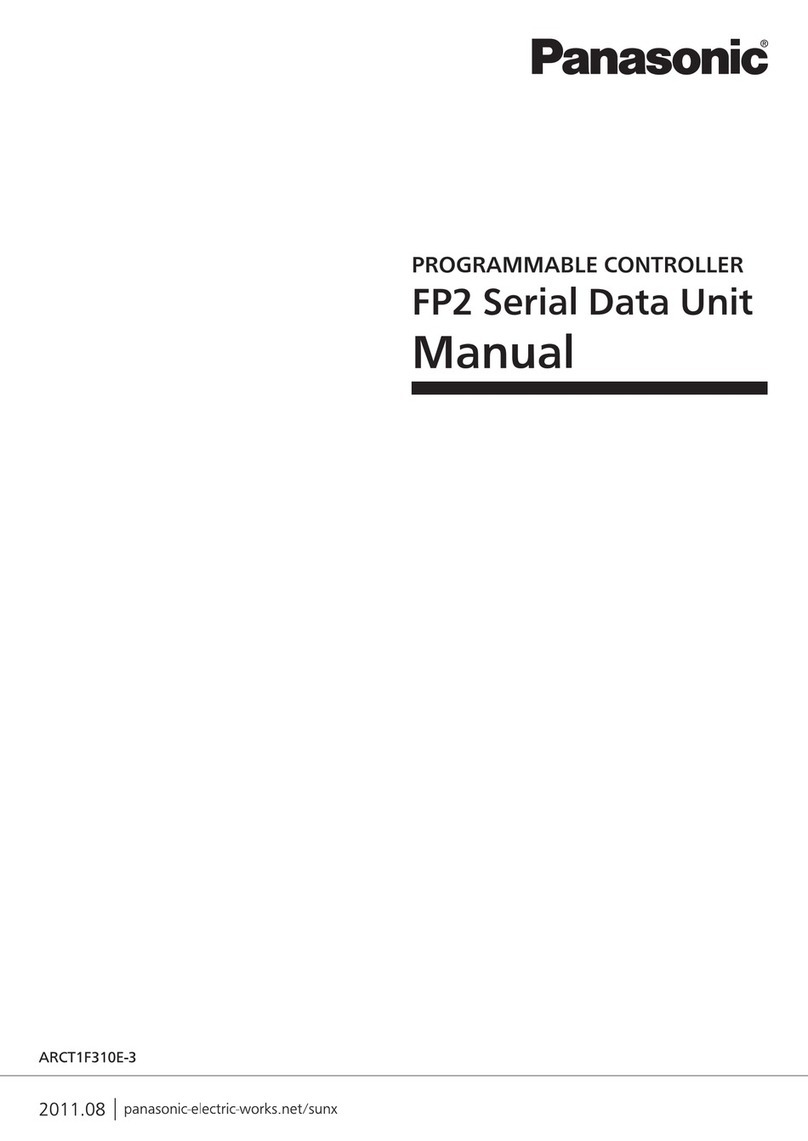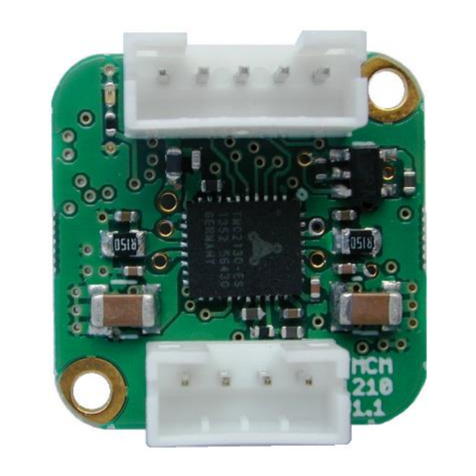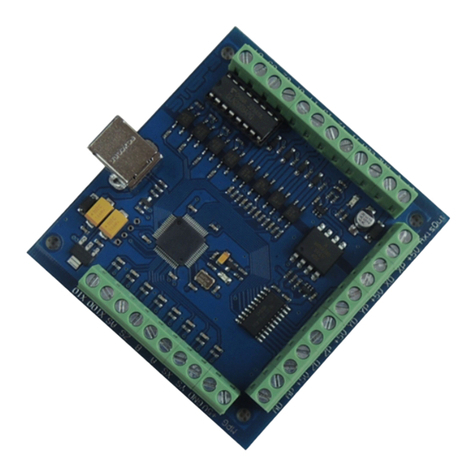AUMA SA Series User manual

Multi-turn actuators
SA 07.2 –SA 16.2
SAR 07.2 –SAR 16.2
with local controls
AUMA SEMIPACT SEM 01.1/SEM 02.1
Assembly, operation, commissioningOperation instructions

Read operation instructions first.
●Observe safety instructions.
●These operation instructions are part of the product.
●Retain operation instructions during product life.
●Pass on instructions to any subsequent user or owner of the product.
Purpose of the document:
This document contains information for installation, commissioning, operation and maintenance staff.It is intended
to support device installation and commissioning.
Reference documents:
Reference documents can be downloaded from the Internet (www.auma.com) or ordered directly from AUMA
(refer to <Addresses>).
Table of contents Page
51. Safety instructions................................................................................................................. 51.1. Basic information on safety 51.2. Range of application 61.3. Applications in Ex zone 22 (option) 61.4. Warnings and notes 71.5. References and symbols
82. Identification........................................................................................................................... 82.1. Name plate 102.2. Short description
113. Transport, storage and packaging........................................................................................ 113.1. Transport 133.2. Storage 133.3. Packaging
144. Assembly................................................................................................................................ 144.1. Mounting position 144.2. Handwheel fitting 144.3. Multi-turn actuator: mount to valve/gearbox 144.3.1. Output drive type A 154.3.1.1. Stem nut: finish machining 164.3.1.2. Multi-turn actuator (with output drive type A):mount to valve 174.3.2. Output drive types B 184.3.2.1. Multi-turn actuator with output drive types B:mount to valve/gearbox 194.4. Accessories for assembly 194.4.1. Stem protection tube for rising valve stem 204.5. Mounting positions of local controls 204.5.1. Mounting positions: modify
215. Electrical connection............................................................................................................. 215.1. Basic information 225.2. (S/SH) electrical connection (AUMA plug/socket connector) 235.2.1. Terminal compartment : open 245.2.2. Cable connection 265.2.3. Terminal compartment : close
2
SA 07.2 –SA 16.2 / SAR 07.2 –SAR 16.2
Table of contents SEM 01.1/SEM 02.1

275.3. Accessories for electrical connection 275.3.1. Parking frame 275.3.2. DS intermediate frame for double sealing 285.3.3. External earth connection
296. Operation................................................................................................................................ 296.1. Manual operation 296.1.1. Engage manual operation 296.1.2. Disengage manual operation. 306.2. Motor operation 306.2.1. Local operation 306.2.2. Actuator operation from remote
317. Indications.............................................................................................................................. 317.1. Indication lights 317.2. Mechanical position indicator/running indication on indicator mark on cover
328. Signals (output signals)......................................................................................................... 328.1. Feedback signals from actuator 328.2. Signals from local controls
339. Commissioning...................................................................................................................... 339.1. Switch compartment: open 339.2. Torque switching: set 349.3. Limit switching: set 349.3.1. End position CLOSED (black section): set 359.3.2. End position OPEN (white section): set 359.4. Intermediate positions: set 369.4.1. Running direction CLOSE (black section): set 369.4.2. Running direction OPEN (white section): set 379.5. Test run 379.5.1. Direction of rotation: check 389.5.2. Limit switching: check 389.6. Electronic position transmitter EWG 01.1 399.6.1. Measuring range: set 409.6.2. Current values: adjust 419.6.3. LED end position signalling: switch on/off 419.7. Potentiometer 419.7.1. Potentiometer setting 429.8. Electronic position transmitter RWG 429.8.1. Measuring range: set 439.9. Mechanical position indicator: set 449.10. Switch compartment: close
4510. Corrective action.................................................................................................................... 4510.1. Faults during operation/commissioning 4510.2. Motor protection (thermal monitoring)
4711. Servicing and maintenance................................................................................................... 4711.1. Preventive measures for servicing and safe operation 4711.2. Maintenance 4811.3. Disposal and recycling
3
SA 07.2 –SA 16.2 / SAR 07.2 –SAR 16.2
SEM 01.1/SEM 02.1 Table of contents

4912. Technical data......................................................................................................................... 4912.1. Technical data Multi-turn actuators
5313. Spare parts............................................................................................................................. 5313.1. Multi-turn actuators SA 07.2 –SA 16.2/SAR 07.2 –SAR 16.2 5513.2. Local controls AUMA SEMIPACT SEM 01.1/SEM 02.1
5714. Certificates.............................................................................................................................. 5714.1. Declaration of Incorporation and EU Declaration of Conformity
60Index........................................................................................................................................
62Addresses...............................................................................................................................
4
SA 07.2 –SA 16.2 / SAR 07.2 –SAR 16.2
Table of contents SEM 01.1/SEM 02.1

1. Safety instructions
1.1. Basic information on safety
Standards/directives AUMA products are designed and manufactured in compliance with recognised
standards and directives.This is certified in a Declaration of Incorporation and an
EU Declaration of Conformity.
The end user or the contractor must ensure that all legal requirements, directives,
guidelines, national regulations and recommendations with respect to assembly,
electrical connection, commissioning and operation are met at the place of installation.
Safetyinstructions/warn-
ings All personnel working with this device must be familiar with the safety and warning
instructions in this manual and observe the instructions given. Safety instructions
and warning signs on the device must be observed to avoid personal injury or property
damage.
Qualification of staff Assembly, electrical connection, commissioning, operation, and maintenance must
be carried out exclusively by suitably qualified personnel having been authorised by
the end user or contractor of the plant only.
Prior to working on this product, the staff must have thoroughly read and understood
these instructions and, furthermore, know and observe officially recognised rules
regarding occupational health and safety.
Commissioning Prior to commissioning, it is important to check that all settings meet the requirements
of the application. Incorrect settings might present a danger to the application, e.g.
cause damage to the valve or the installation.The manufacturer will not be held
liable for any consequential damage. Such risk lies entirely with the user.
Operation Prerequisites for safe and smooth operation:
●Correct transport, proper storage, mounting and installation, as well as careful
commissioning.
●Only operate the device if it is in perfect condition while observing these instruc-
tions.
●Immediately report any faults and damage and allow for corrective measures.
●Observe recognised rules for occupational health and safety.
●Observe the national regulations.
●During operation,thehousing warms upandsurfacetemperatures >60°C may
occur.To prevent possible burns, we recommend checking the surface temper-
ature using an appropriate thermometer and wearing protective gloves, if re-
quired, prior to working on the device.
Protective measures The end user or the contractor is responsible for implementing required protective
measures on site, such as enclosures, barriers, or personal protective equipment
for the staff.
Maintenance To ensure safe device operation, the maintenance instructions included in this manual
must be observed.
Any device modification requires prior written consent of the manufacturer.
1.2. Range of application
AUMA multi-turn actuators are designed for the operation of industrial valves, e.g.
globe valves, gate valves, butterfly valves, and ball valves.
Other applications require explicit (written) confirmation by the manufacturer.
The following applications are not permitted, e.g.:
●Industrial trucks according to EN ISO 3691
●Lifting appliances according to EN 14502
●Passenger lifts according to DIN 15306 and 15309
●Service lifts according to EN 81-1/A1
5
SA 07.2 –SA 16.2 / SAR 07.2 –SAR 16.2
SEM 01.1/SEM 02.1 Safety instructions

●Escalators
●Continuous duty
●Buried service
●Continuous submersion (observe enclosure protection)
●Potentially explosive areas, with the exception of zone 22
●Radiation exposed areas in nuclear power plants
No liability can be assumed for inappropriate or unintended use.
Observance of these operation instructions is considered as part of the device's
designated use.
Information These operation instructions are only valid for the "clockwise closing" standard
version, i.e. driven shaft turns clockwise to close the valve.
1.3. Applications in Ex zone 22 (option)
Actuators of the indicated series basically meet the requirements for applications in
dust hazardous locations of ZONE 22 in compliance with the ATEX directive
2014/34/EU.
The actuators are designed to meet enclosure protection IP68 and fulfil the
requirements of EN 50281-1-1:1998 section 6 –Electrical apparatus for use in
presence of combustible dust, requirements for category 3 electrical equipment –
protected by enclosures.
To comply with all requirements of EN 50281-1-1:1998, it is imperative that the
following points are observed:
●In compliance with the ATEX directive 2014/34/EU, the actuators must be
equipped with an additional identification –II3D IP6X T150 °C.
●The maximum surface temperature of the actuators, based on an ambient
temperature of +40 °C in accordance with EN 50281-1-1 section 10.4, is +150
°C.In accordance with section 10.4, an increased dust deposit on the equipment
was not considered for the determination of the maximum surface temperature.
●The correct connection of the thermoswitches or the PTC thermistors as well
as fulfilling the requirements of the duty type and the technical data are pre-
requisites for compliance with the maximum surface temperature of devices.
●The connection plug may only be plugged in or pulled out when device is dis-
connected from the mains.
●The cable glands used also have to meet the requirements of category II3 D
and must at least comply with enclosure protection IP67.
●The actuators must be connected by means of an external ground connection
(accessory part) to the potential compensation or integrated into an earthed
piping system.
●Thethreadedplug (part number511.0) or thestemprotection tube withprotect-
ive cap (part numbers 568.1 and 568.2) for sealing the hollow shaft must imper-
ativelybe mounted to guaranteetightness and consequently ensure combustible
dust hazard protection.
●As a general rule, the requirements of EN 50281-1-1 must be respected in dust
hazardous locations.During commissioning, service, and maintenance, special
care as well as qualified and trained personnel are required for the safe operation
of actuators.
1.4. Warnings and notes
The following warnings draw special attention to safety-relevant procedures in these
operation instructions, each marked by the appropriate signal word (DANGER,
WARNING, CAUTION, NOTICE).
Indicates an imminently hazardous situation with a high level of risk. Failure
to observe this warning could result in death or serious injury.
6
SA 07.2 –SA 16.2 / SAR 07.2 –SAR 16.2
Safety instructions SEM 01.1/SEM 02.1

Indicates a potentially hazardous situation with a medium level of risk.Failure
to observe this warning could result in death or serious injury.
Indicates a potentially hazardous situation with a low level of risk. Failure to
observe this warning could result in minor or moderate injury. May also be
used with property damage.
Potentially hazardous situation. Failure to observe this warning could result
in property damage. Is not used for personal injury.
Arrangement and typographic structure of the warnings
Type of hazard and respective source!
Potential consequence(s) in case of non-observance (option)
→Measures to avoid the danger
→Further measure(s)
Safety alert symbol warns of a potential personal injury hazard.
The signal word (here: DANGER) indicates the level of hazard.
1.5. References and symbols
The following references and symbols are used in these instructions:
Information The term Information preceding the text indicates important notes and information.
Symbol for CLOSED (valve closed)
Symbol for OPEN (valve open)
Important information before the next step.This symbol indicates what is required
for the next step or what has to be prepared or observed.
< > Reference to other sections
Terms in brackets shown above refer to other sections of the document which provide
further information on this topic.These terms are either listed in the index, a heading
or in the table of contents and may easily be located.
7
SA 07.2 –SA 16.2 / SAR 07.2 –SAR 16.2
SEM 01.1/SEM 02.1 Safety instructions

2. Identification
2.1. Name plate
Each device component (actuator, local controls, motor) is equipped with a name
plate.
Figure 1: Arrangement of name plates
[1] Actuator name plate
[2] Local controls name plate
[3] Motor name plate
[4] Additional plate, e.g. KKS plate (Power Plant Classification System)
Actuator name plate
Figure 2: Actuator name plate (example)
[1] Name of manufacturer
[2] Address of manufacturer
[3] Type designation
[4] Order number
[5] Serial number
[6] Speed
[7] Torque range in direction CLOSE
[8] Torque range in direction OPEN
[9] Type of lubricant
[10] Permissible ambient temperature
[11] Can be assigned as an option upon customer request
[12] Enclosure protection
[13] Data Matrix code
8
SA 07.2 –SA 16.2 / SAR 07.2 –SAR 16.2
Identification SEM 01.1/SEM 02.1

Local controls name plate
Figure 3: Local controls name plate (example)
[1] Type designation
[2] Order number
[3] Serial number
[4] Actuator terminal plan
[5] Wiring diagram
[6] Mains voltage
[7] Enclosure protection
[8] Data Matrix code
Descriptions referring to name plate indications
Type designation Figure 4:Type designation (example)
1. Type and size of actuator
2. Flange size
Type and size
These instructions apply to the following device types and sizes:
●Type SA = Multi-turn actuators for open-close duty
Sizes: SA 07.2, 07.6, 10.2, 14.2, 14.6, 16.2
●Type SAR= Multi-turn actuators for modulating duty
Sizes: 07.2, 07.6, 10.2, 14.2, 14.6, 16.2
●Type SEM = SEMIPACT local controls
Sizes: 01.1, 02.1
Order number The product can be identified using this number and the technical data as well as
order-related data pertaining to the device can be requested.
Please always state this number for any product inquiries.
On the Internet at http://www.auma.com, we offer a service allowing authorised
users to download order-related documents such as wiring diagrams and technical
data (both in German and English), inspection certificates and the operation
instructions when entering the order number.
Actuator serial number Table 1:
Description of serial number (with example 0516MD12345)
MD123451605
Positions 1+2: Assembly in week = week 0505
Positions 3+4:Year of manufacture = 201616
Internal number for unambiguous product identificationMD12345
Data Matrix code When registered as authorised user, you may use the AUMA Support App to scan
the Data Matrix code and directly access the order-related product documents without
having to enter order number or serial number.
9
SA 07.2 –SA 16.2 / SAR 07.2 –SAR 16.2
SEM 01.1/SEM 02.1 Identification

Figure 5: Link to the App store:
2.2. Short description
Multi-turn actuator Definition in compliance with EN ISO 5210:
A multi-turn actuator is an actuator which transmits torque to a valve for at least one
full revolution.It is capable of withstanding thrust.
AUMA multi-turn actuators are driven by an electric motor and are capable of
withstanding thrust in combination with output drive type A. For manual operation,
a handwheel is provided.Switching off in end positions may be either by limit or
torque seating. Actuator controls are required to operate or process the actuator
signals.
Local controls TheAUMA SEMIPACTlocalcontrol unit isusedtooperate theactuatorfrom LOCAL.
The SEMIPACT is not considered as actuator controls.The switching elements
(push buttons, selector switch) and indication lights must be wired to external controls
(e.g. reversing contactors).
10
SA 07.2 –SA 16.2 / SAR 07.2 –SAR 16.2
Identification SEM 01.1/SEM 02.1

3. Transport, storage and packaging
3.1. Transport
For transport to place of installation, use sturdy packaging.
Hovering load!
Risk of death or serious injury.
→Do NOT stand below hovering load.
→Attach ropes or hooks for the purpose of lifting by hoist only to housing and NOT
to handwheel.
→Actuators mounted on valves: Attach ropes or hooks for the purpose of lifting
by hoist to valve and NOT to actuator.
→Actuatorsmountedto gearboxes:Attachropesor hooks for thepurpose of lifting
by hoist only to the gearbox using eyebolts and NOT to the actuator.
→Respect total weight of combination (actuator, actuator controls, gearbox, valve)
Figure 6: Example: Lifting the actuator
Table 2:
Weights for multi-turn actuators SA 07.2 –SA 16.2 / SAR 07.2 –SAR 16.2
Weight2)
3-phase AC motor
Motor type1)
Type designation
Actuator [kg]
19VD...SA 07.2/
SAR 07.2 20AD...
20VD...SA 07.6/
SAR 07.6 21AD...
22VD...SA 10.2/
SAR 10.2 25AD...
44VD...SA 14.2/
SAR 14.2 48AD...
46VD...SA 14.6/
SAR 14.6 53AD...
67VD...SA 16.2/
SAR 16.2 79 –83AD...
Refer to motor name plate1)
11
SA 07.2 –SA 16.2 / SAR 07.2 –SAR 16.2
SEM 01.1/SEM 02.1 Transport, storage and packaging

Indicated weight includes AUMA NORM multi-turn actuator with 3-phase AC motor, electrical con-
nection in standard version, output drive type B1 and handwheel.For other output drive types, heed
additional weights.
2)
Table 3:
Weights for multi-turn actuators SA 07.2 –SA 16.2 / SAR 07.2 –SAR 16.2
Weight2)
1-phase AC motor
Motor type1)
Type designation
Actuator [kg]
25VE...SA 07.2/
SAR 07.2 28AE...
25VE...SA 07.6/
SAR 07.6 28AE...
37AC...
28VE...48-4...SA 10.2/
SAR 10.2 31VE...48-2...
40AC... 56-4...
43AC... 56-2...
59VE...SA 14.2/
SAR 14.2 61VC...
63AC...
63VE...SA 14.6/
SAR 14.6 66VC...
Refer to motor name plate1) Indicated weight includes AUMA NORM multi-turn actuator with 1-phase AC motor, electrical con-
nection in standard version, output drive type B1 and handwheel.For other output drive types, heed
additional weights.
2)
Table 4:
Weights for multi-turn actuators SA 07.2 –SA 16.2 / SAR 07.2 –SAR 16.2
Weight2)
DC motor
Motor type1)
Type designation
Actuator [kg]
29FN... 63-...SA 07.2/
SAR 07.2 32FN... 71-...
30FN... 63-...SA 07.6/
SAR 07.6 44FN... 80-...
33FN... 63-...SA 10.2/
SAR 10.2 36FN... 71-...
56FN... 90-...
68FN... 71-... / FN... 80-...SA 14.2/
SAR 14.2 100FN... 90-...
76FN... 80-... / FN... 90-...SA 14.6/
SAR 14.6 122FN... 112-...
123FN... 100-...SA 16.2/
SAR 16.2
Refer to motor name plate1) Indicated weight includes AUMA NORM multi-turn actuator with DC motor, electrical connection in
standard version, output drive type B1 and handwheel.For other output drive types, heed additional
weights.
2)
12
SA 07.2 –SA 16.2 / SAR 07.2 –SAR 16.2
Transport, storage and packaging SEM 01.1/SEM 02.1

Table 5:
Weights for output drive type A 07.2 –A 16.2
[kg]Flange sizeType designation
1.1F07A 07.2
1.3F10
2.8F10A 10.2
6.8F14A 14.2
11.7F16A 16.2
Table 6:
Weights for output drive type AF 07.2 –AF 16.2
[kg]Flange sizeType designation
5.2F10AF 07.2
5.2F10AF 07.6
5.5F10AF 10.2
13.7F14AF 14.2
23F16AF 16.2
3.2. Storage
Danger of corrosion due to inappropriate storage!
→Store in a well-ventilated, dry room.
→Protect against floor dampness by storage on a shelf or on a wooden pallet.
→Cover to protect against dust and dirt.
→Apply suitable corrosion protection agent to uncoated surfaces.
Long-term storage For long-term storage (more than 6 months), observe the following points:
1. Prior to storage:
Protect uncoated surfaces, in particular the output drive parts and mounting
surface, with long-term corrosion protection agent.
2. At an interval of approx. 6 months:
Check for corrosion.If first signs of corrosion show, apply new corrosion protec-
tion.
3.3. Packaging
Our products are protected by special packaging for transport when leaving the
factory.The packaging consists of environmentally friendly materials which can easily
be separated and recycled.We use the following packaging materials: wood,
cardboard, paper, and PE foil. For the disposal of the packaging material, we
recommend recycling and collection centres.
13
SA 07.2 –SA 16.2 / SAR 07.2 –SAR 16.2
SEM 01.1/SEM 02.1 Transport, storage and packaging

4. Assembly
4.1. Mounting position
The product described in this document can be operated without restriction in any
mounting position.
4.2. Handwheel fitting
Information For transport reason, handwheels with a diameter 400 mm and larger are supplied
separately within the scope of delivery.
Figure 7: Handwheel
[1] Spacer
[2] Input shaft
[3] Handwheel
[4] Retaining ring
1. If required, fit spacer [1] onto input shaft [2].
2. Slip handwheel [3] onto input shaft.
3. Secure handwheel [3] using the retaining ring [4] supplied.
Information The retaining ring [4] (together with these operation instructions) is stored in a
weatherproof bag, which is attached to the device prior to delivery.
4.3. Multi-turn actuator: mount to valve/gearbox
Danger of corrosion due to damage to paint finish and condensation!
→Touch up damage to paint finish after work on the device.
→After mounting, connect the device immediately to electrical mains to ensure
that heater minimises condensation.
4.3.1. Output drive type A
Application ●Output drive for rising, non-rotating valve stem
●Capable of withstanding thrust
Design Output mounting flange [1] with axial bearing stem nut [2] form one unit.Torque is
transmitted to valve stem [3] via stem nut [2].
14
SA 07.2 –SA 16.2 / SAR 07.2 –SAR 16.2
Assembly SEM 01.1/SEM 02.1

Figure 8: Design of output drive type A
[1] Output mounting flange
[2] Stem nut with dog coupling
[3] Valve stem
Information To adapt the actuators to available output drive types A with flanges F10 and F14
(year of manufacture:2009 and earlier), an adapter is required.The adapter can be
ordered from AUMA.
4.3.1.1. Stem nut: finish machining
✔This working step is only required if stem nut is supplied unbored or with pilot
bore.
Figure 9: Output drive type A
[1] Stem nut
[2] Axial needle roller bearing
[2.1] Axial bearing washer
[2.2] Axial needle roller and cage assembly
[3] Spigot ring
1. Remove spigot ring [3] from output drive.
2. Remove stem nut [1] together with axial needle roller bearings [2].
3. Remove axial bearing washers [2.1] and axial needle roller and cage assemblies
[2.2] from stem nut [1].
15
SA 07.2 –SA 16.2 / SAR 07.2 –SAR 16.2
SEM 01.1/SEM 02.1 Assembly

4. Drill and bore stem nut [1] and cut thread.
Information: When fixing in the chuck, make sure stem nut runs true!
5. Clean the machined stem nut [1].
6. Apply sufficient Lithium soap EP multi-purpose grease to axial needle roller and
cage assemblies [2.2] and axial bearing washers [2.1], ensuring that all hollow
spaces are filled with grease.
7. Place greased axial needle roller and cage assemblies [2.2] and axial bearing
washers [2.1] onto stem nut [1].
8. Re-insert stem nut [1] with bearings [2] into output drive.
Information: Ensure that dogs or splines are placed correctly in the keyway of
the hollow shaft.
9. Screw in spigot ring [3] until it is firm against the shoulder.
4.3.1.2. Multi-turn actuator (with output drive type A): mount to valve
Figure 10: Assembly of output drive type A
[1] Valve stem
[2] Output drive type A
[3] Screws to actuator
[4] Valve flange
[5] Screws to output drive
1. If the output drive type A is already mounted to the multi-turn actuator:Loosen
screws [3] and remove output drive type A [2].
2. Check if the flange of output drive type A matches the valve flange [4].
3. Apply a small quantity of grease to the valve stem [1].
4. Place output drive type A on valve stem and turn until it is flush on the valve
flange.
5. Turn output drive type A until alignment of the fixing holes.
6. Screw in fastening screws [5], however do not completely tighten.
7. Fit multi-turn actuator on the valve stem so that the stem nut dogs engage into
the output drive sleeve.
➥The flanges are flush with each other if properly engaged.
8. Adjust multi-turn actuator until alignment of the fixing holes.
9. Fasten multi-turn actuator with screws [3].
16
SA 07.2 –SA 16.2 / SAR 07.2 –SAR 16.2
Assembly SEM 01.1/SEM 02.1

10. Fasten screws [3] crosswise with a torque according to table.
Table 7:
Tightening torques for screws
Tightening torque [Nm]Threads
Strength class A2-80
10M6
24M8
48M10
82M12
200M16
392M20
11. Turn multi-turn actuator with handwheel in direction OPEN until valve flange
and output drive A are firmly placed together.
12. Tighten fastening screws [5] between valve and output drive type A crosswise
applying a torque according to table.
4.3.2. Output drive types B
Application ●For rotating, non-rising valve stem
●Not capable of withstanding thrust
Design Connection between hollow shaft and valve or gearbox via output drive sleeve fixed
to the hollow shaft of the multi-turn actuator via retaining ring.
When exchanging the output drive sleeve, later retrofitting to a different output drive
type is possible
●Output drive type B: Output drive sleeve with bore according to DIN 3210
●Output drive types B1 –B4:Output drive sleeve with bore according to EN ISO
5210
Figure 11: Output drive type B
[1] Flange multi-turn actuator (e.g. F07)
[2] Hollow shaft
[3] Output drive sleeve (illustration examples)
[3] B/B1/B2 and [3]* B3/B4, respectively with bore and keyway)
[4] Gearbox/valve shaft with parallel key
17
SA 07.2 –SA 16.2 / SAR 07.2 –SAR 16.2
SEM 01.1/SEM 02.1 Assembly

Information Spigot at valve flanges should be loose fit.
4.3.2.1. Multi-turn actuator with output drive types B: mount to valve/gearbox
Figure 12: Mounting output drive types B
[1] Multi-turn actuator
[2] Valve/gearbox
[3] Valve/gearbox shaft
1. Check if mounting flanges fit together.
2. Check if output drive of multi-turn actuator [1] matches the output drive of
valve/gearbox or valve/gearbox valve shaft [2/3].
3. Apply a small quantity of grease to the valve or gearbox shaft [3].
4. Fit multi-turn actuator [1].
Information: Ensure that the spigot fits uniformly in the recess and that the
mounting faces are in complete contact.
5. Fasten multi-turn actuator with screws according to table.
Information: We recommend applying liquid thread sealing material to the
screws to avoid contact corrosion.
6. Fasten screws crosswise to a torque according to table.
Table 8:
Tightening torques for screws
Tightening torque [Nm]Threads
Strength class A2-80
10M6
24M8
48M10
82M12
200M16
392M20
18
SA 07.2 –SA 16.2 / SAR 07.2 –SAR 16.2
Assembly SEM 01.1/SEM 02.1

4.4. Accessories for assembly
4.4.1. Stem protection tube for rising valve stem
Figure 13: Assembly of the stem protection tube
[1] Protective cap for stem protection tube (fitted)
[1]* Option: Protective cap made of steel (screwed)
[2] Stem protection tube
[3] V-seal
1. Seal all threads with hemp,Teflon tape, or thread sealing material.
2. Screw stem protection tube [2] into thread and tighten it firmly.
Information: For stem protection tubes made of two or more segments, all
parts have to be thoroughly screwed together.
Figure 14: Protection tube made of segments with threaded sleeves (>900 mm)
[2] Segment of stem protection tube
[3] V-seal
[4] Threaded sleeve
3. Push down the sealing ring [3] onto the housing.
Information: For mounting segments, push down seals of segments down to
the sleeve (connecting piece).
4. Check whether protective cap [1] for stem protection tube is available, in perfect
condition and tightly placed on or screwed to the tube.
Risk of bending or oscillation of protection tubes exceeding a length of 2 m!
Risk of damage at stem and/or protection tube.
→Secure protection tubes exceeding 2 m by an appropriate support.
19
SA 07.2 –SA 16.2 / SAR 07.2 –SAR 16.2
SEM 01.1/SEM 02.1 Assembly

4.5. Mounting positions of local controls
The mounting position of the local controls is designed according to the order. If,
after mounting the actuator to the valve or the gearbox on site, the local controls are
in an unfavourable position, the mounting position can be changed at a later date.
Four mounting positions shifted by respectively 90° are possible.
Figure 15: Mounting positions
4.5.1. Mounting positions: modify
Hazardous voltage!
Risk of electric shock.
→Disconnect device from the mains before opening.
1. Loosen screws and remove local controls.
2. Loosen 3 screws of the board, turn board to the new position and fasten the
screws.
3. Check whether O-ring is in good condition, correctly insert O-ring.
4. Turn local controls into new position and re-place.
Cable damage due to twisting or pinching!
Risk of functional failures.
→Turn local controls by a maximum of 180°.
→Carefully assemble local controls to avoid pinching the cables.
5. Fasten screws evenly crosswise.
20
SA 07.2 –SA 16.2 / SAR 07.2 –SAR 16.2
Assembly SEM 01.1/SEM 02.1
Other manuals for SA Series
3
This manual suits for next models
13
Table of contents
Other AUMA Controllers manuals

AUMA
AUMA SQ 05.2-SQ 14.2 User manual
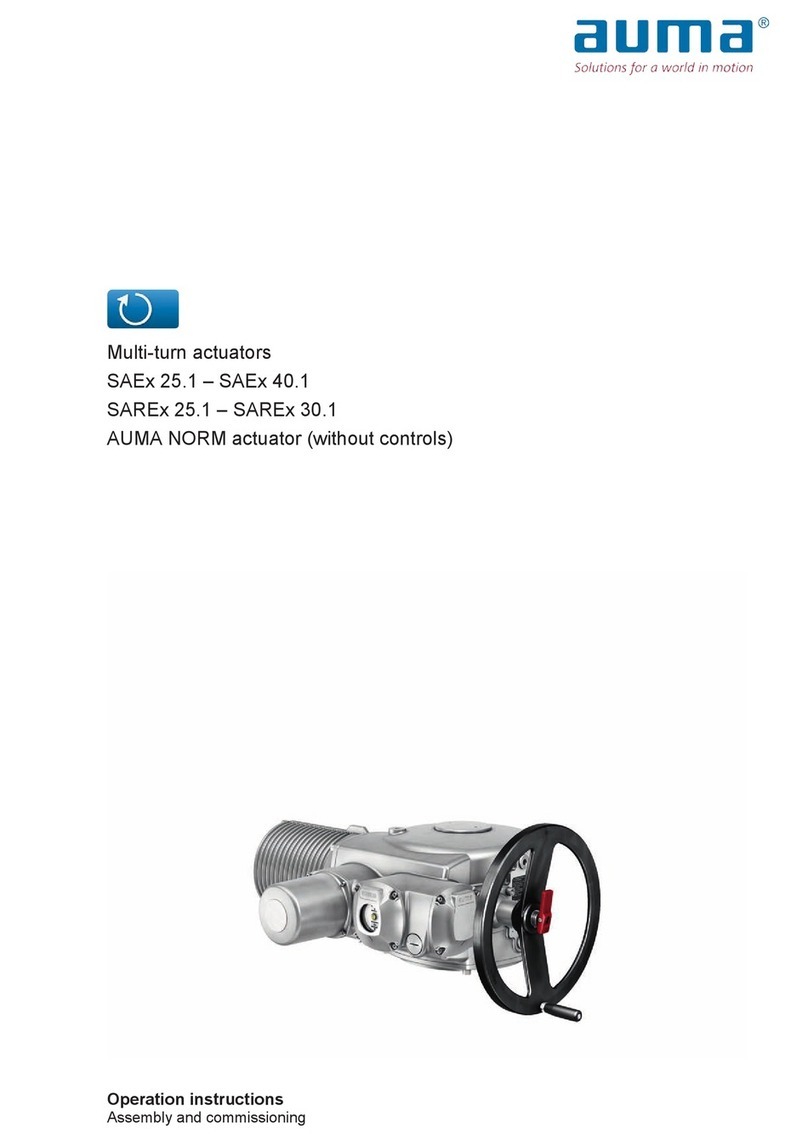
AUMA
AUMA SAEx 25.1 User manual
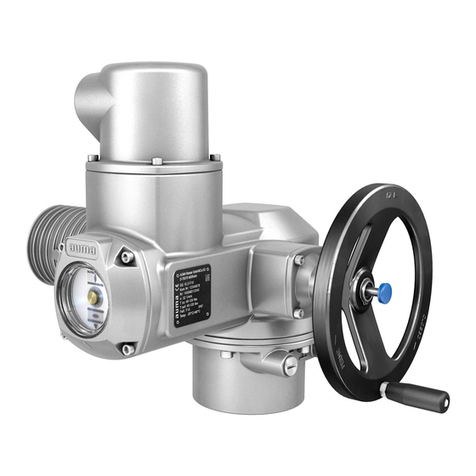
AUMA
AUMA NORM SQ 05.2 Administrator Guide
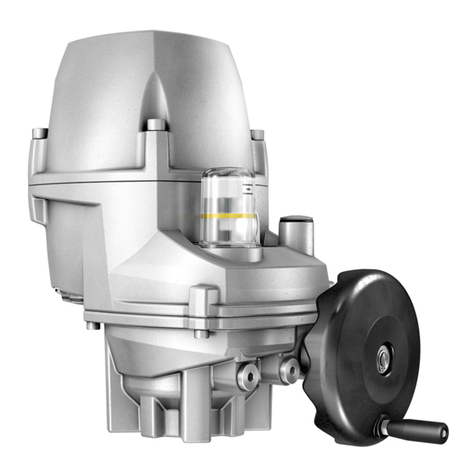
AUMA
AUMA PROFOX PF-M25X User manual
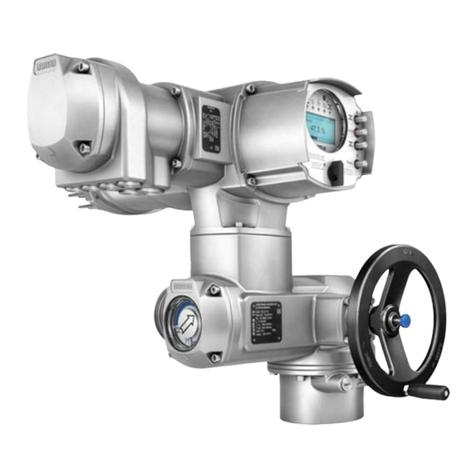
AUMA
AUMA SQV 05.2 User manual
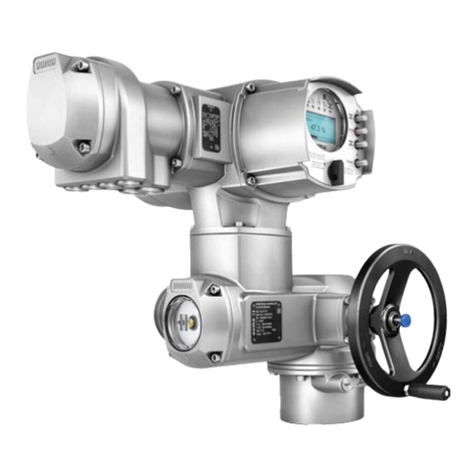
AUMA
AUMA SQ 05.2 User manual
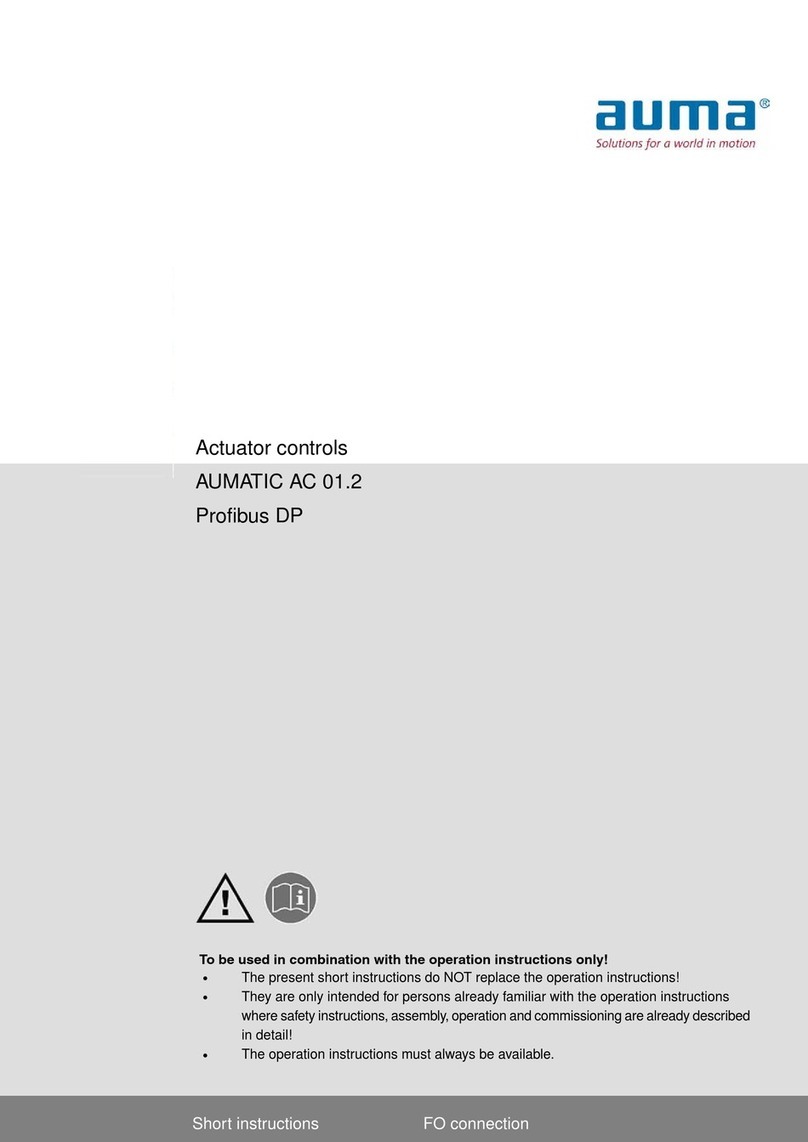
AUMA
AUMA AUMATIC AC 01.2 Manual
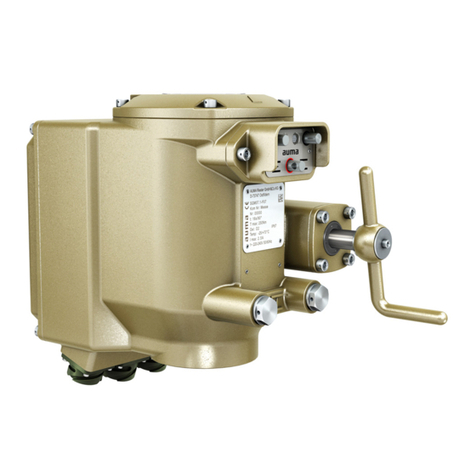
AUMA
AUMA SGM Series User manual
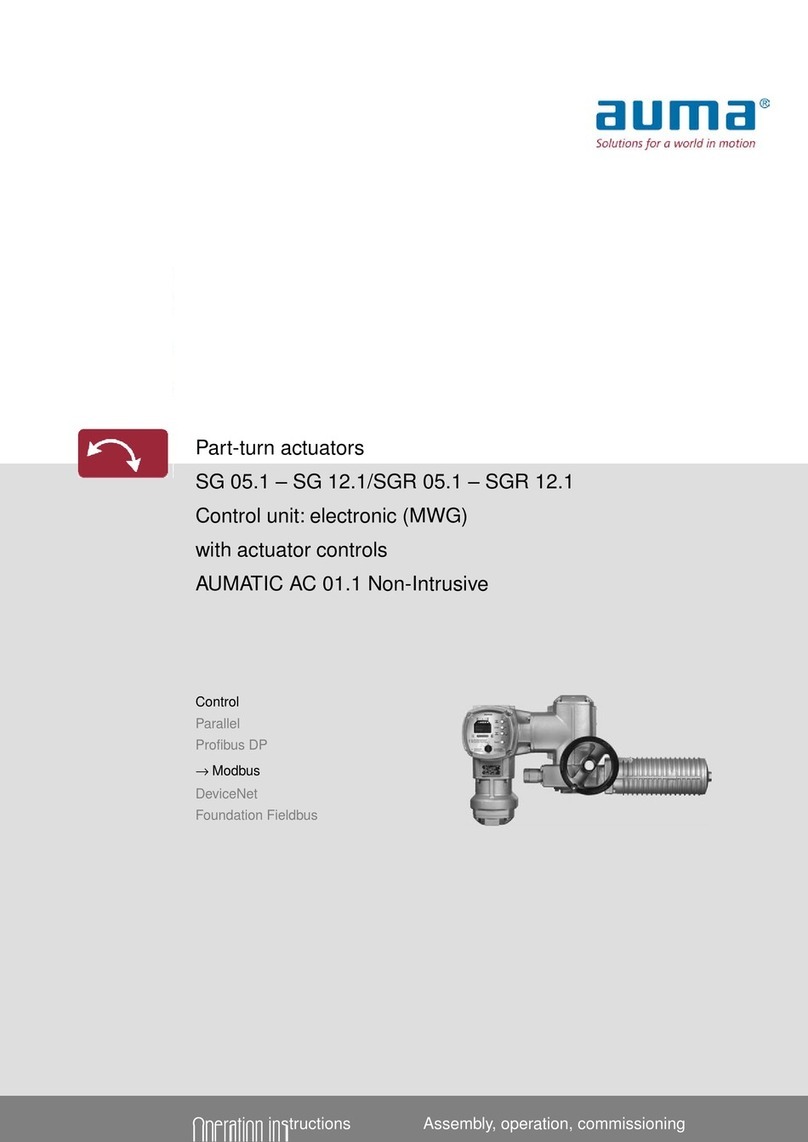
AUMA
AUMA SG 05.1 User manual
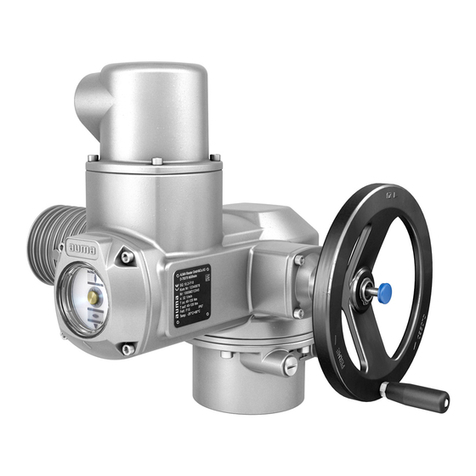
AUMA
AUMA SQ 05.2-F05 User manual
